Southern Africa - South Africa, Botswana, Zimbabwe, Zambia, Namibia
August 23 - September 15, 2016
Part Two - Kruger National Park, South Africa
Page One
Kruger National Park is South Africa's largest park with a total
area of 7,500 square miles and is 200 miles at its widest point. It
is in northeast South Africa. The park has an anti-poaching unit
that is constantly trying to stop big game poaching, such as efforts
to obtain and sell rhino horns.
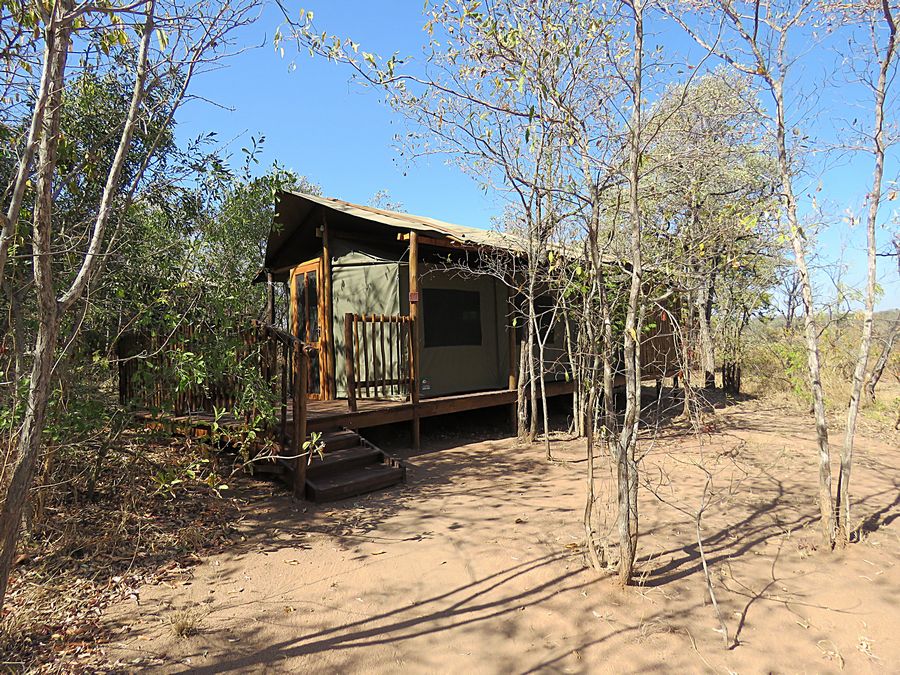
My tent at Buffalo Rock Camp in Kruger National Park.
The last night there, loud crashing noises woke me up
in the middle of the night. I looked through the tent
screen window (on the other side of the tent in this photo),
and saw the outline of an elephant in the darkness with his
trunk reaching up to one of the trees right next to the tent.
To be sure that I knew he was there overnight, he left a large
deposit in front of my tent that I discovered in the morning.

Redheaded weaver male - has a scarlet head, dusky
olive tail and wings and white underbelly. Feeds mostly on
insects.

This male was building a nest. If the nest doesn't meet his
mate's specifications, he will have to start over. The nest incorporates
dry leaves and is suspended from branches or overhead wires.
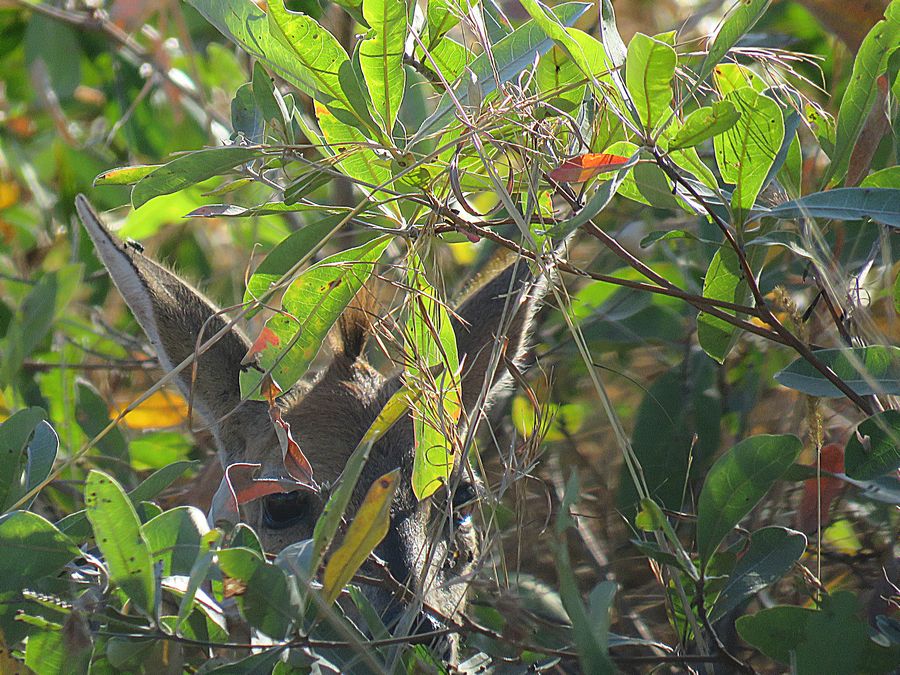
Duiker - a small, gray-brown antelope. Has a black blaze on
forehead and snout. Most active at dusk and dawn and into
the night. Lives in a well-wooded habitat. This is a duiker's
face peering at us through tree leaves before taking off.
We also saw one at night.
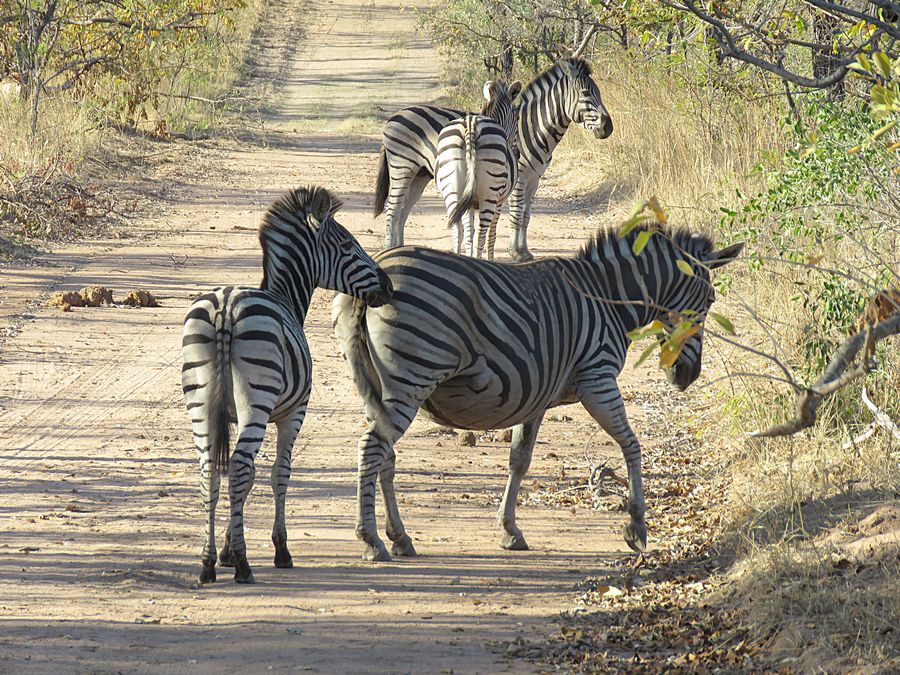
Zebras crossing the road in front of us, which happened
a number of times on the trip.

Impala - This is a female. Impala are graceful reddish
antelope that favor edges of woodland. They have a tuft
of black hair on ankle of hind leg. Males have horns.
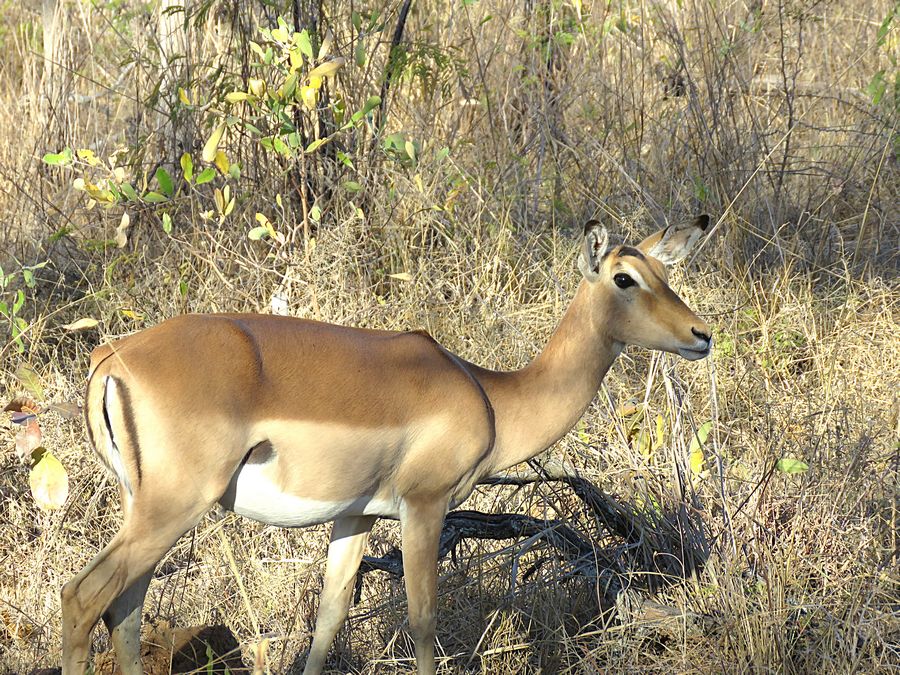
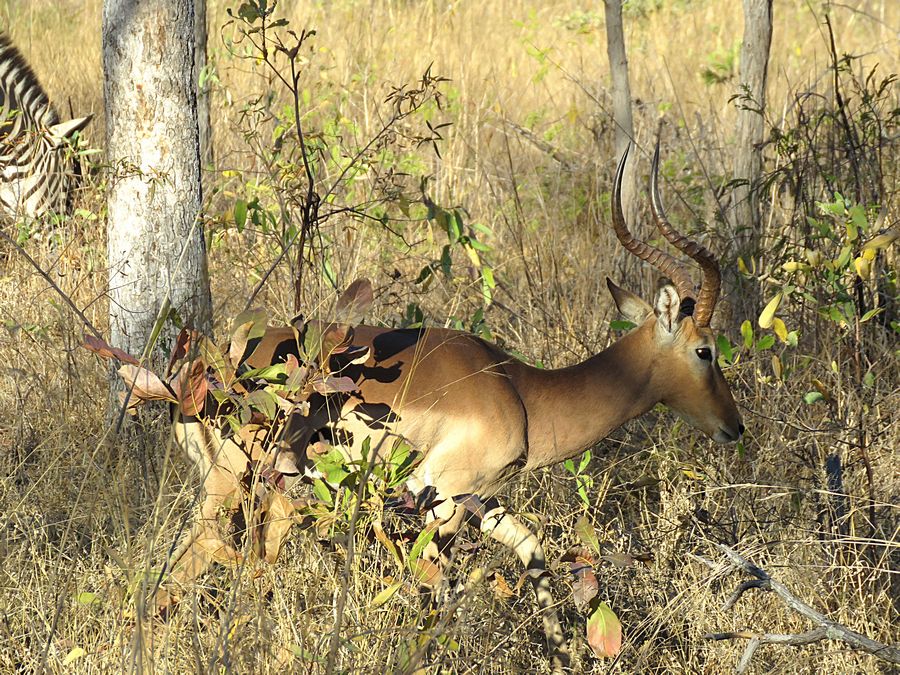
Male Impala
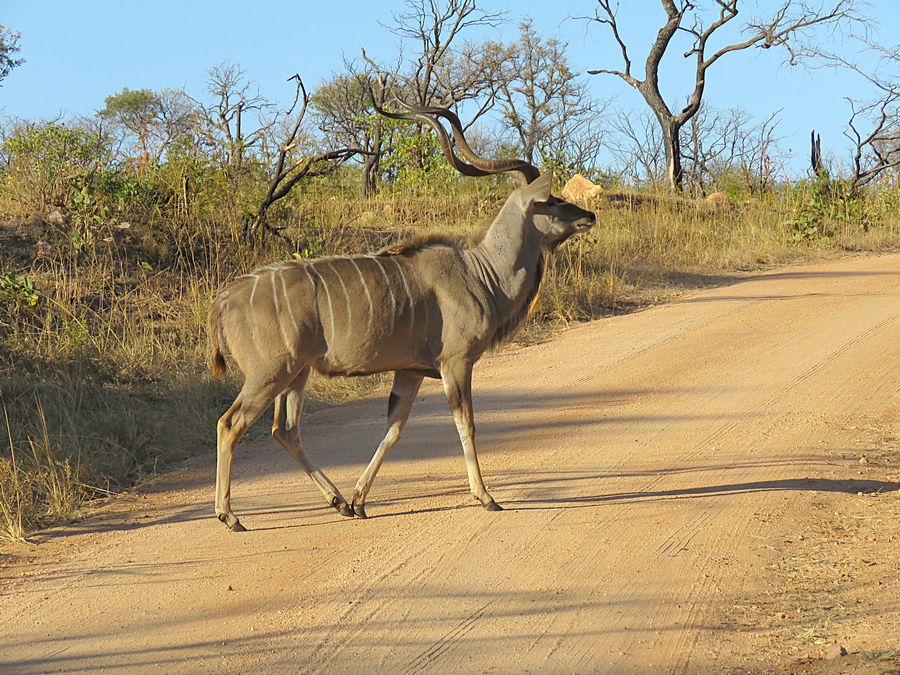
Male kudu crossing the dirt road
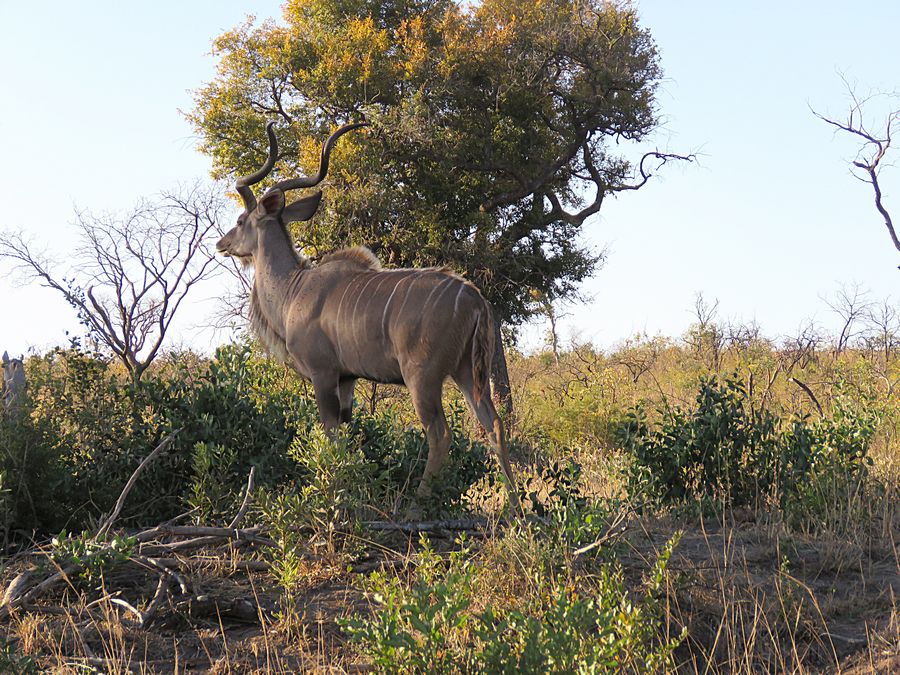
The same male kudu after crossing the road.
Note shape of his horns.

This beautiful bird is a Lilac-breasted Roller. We saw quite
a few. Has blue wings. The breast and cheeks are lilac.
Streamers protrude beyond the tail. They often perch on
dead trees and termite mounds. Prey includes large insects
and lizards.

Chris Turtle, our local guide in Kruger National Park,
holding elephant dung during an early morning bush walk.

Vervet monkey in a tree above the lounge area at Buffalo
Rock Camp. He stole some food that was out and climbed
the tree to enjoy it. Notice that he is showing off his manhood.

Vervet monkeys are inquisitive and agile with a grizzled
gray coat, black face and a quite long tail. They readily
come to the ground but retreat to trees and sleep on branches
at night. They feed on a variety of fruit and small animals.
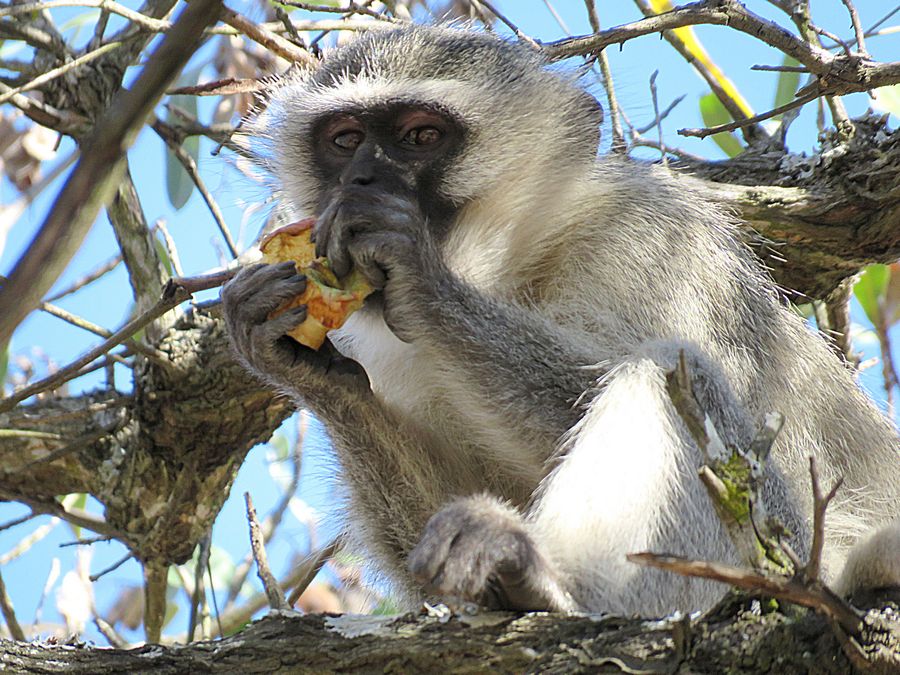
Vervet monkeys often enter camps.

Bushbuck - It is a shy antelope that is primarily nocturnal
but may also be active at dusk and dawn. Browses on leaves
but also feeds on grass, fruit, and flowers. Its reddish brown coat has
numerous white spots.
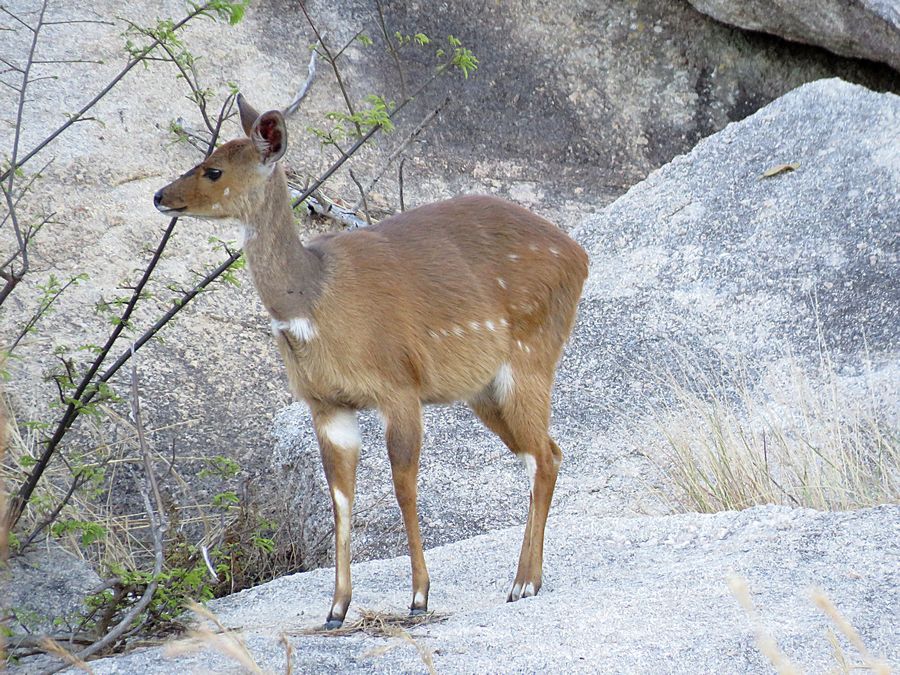
This is a female bushbuck. Only males have horns.

Tour group, which ended up to be 10 great women,
after a married couple cancelled just before the trip. Left to
right: Ellen, Pat, Beth, Carol, Judy, Carole, Julie (behind Carole),
Barbara, Sheila, Barbara.
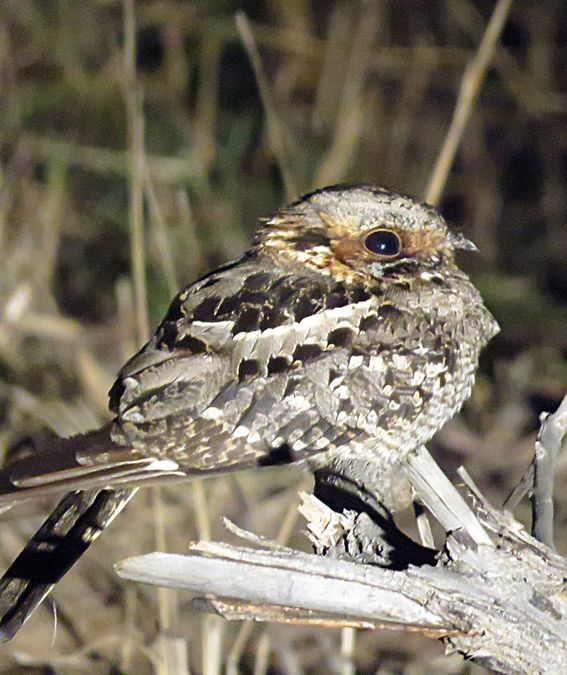
Fierynecked Nightjar - a nocturnal bird. It is rarely seen.
Perches on branches and seldom goes on the ground.
Captures moths and insects.
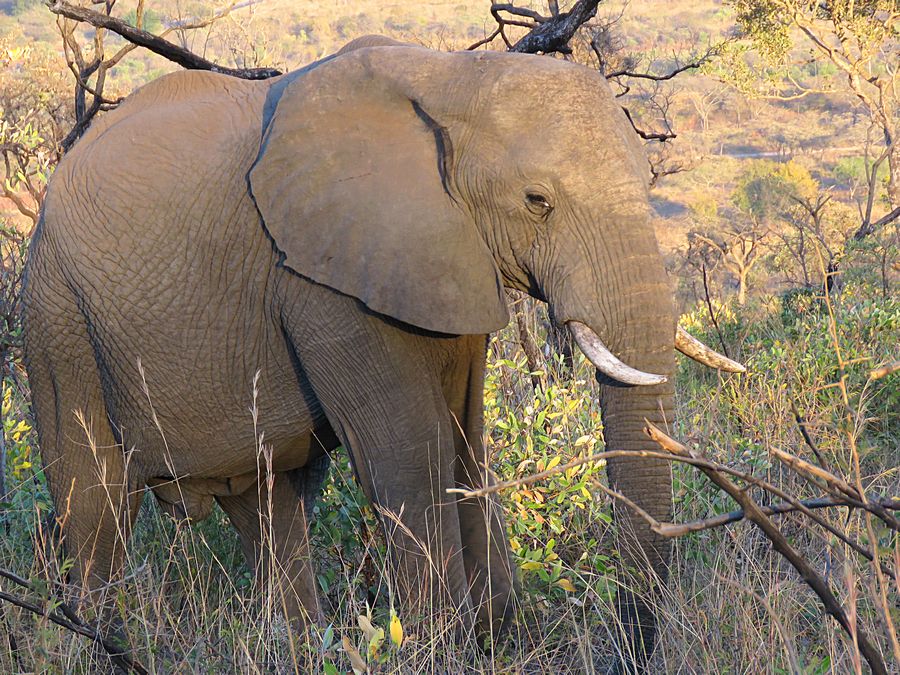
This male elephant was right next to the road.
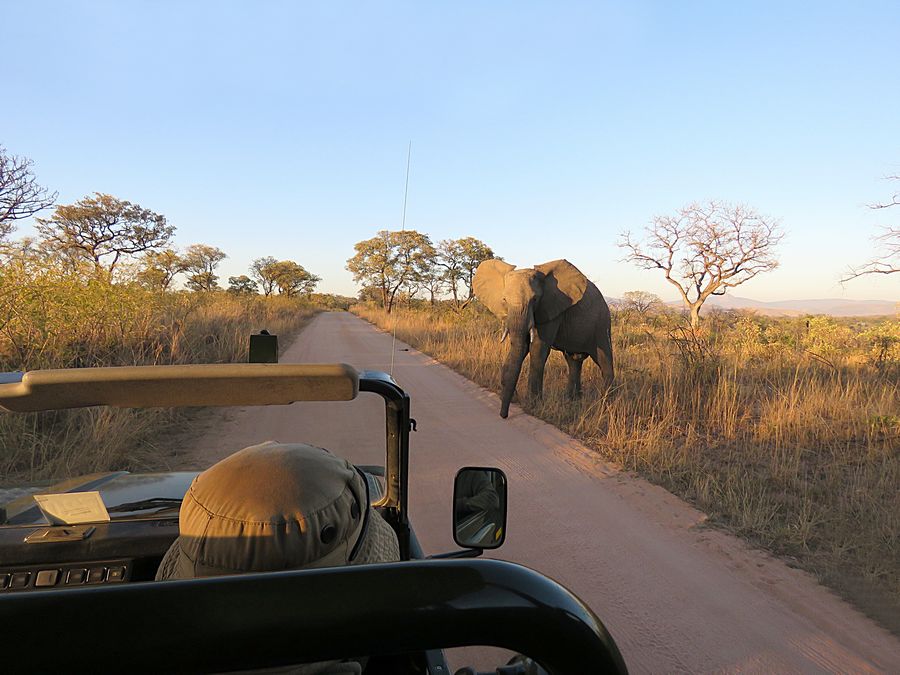
He decided to cross the road in front of our vehicle,
after taking a close look at us.

A zebra in the midst of tall grass just off the road.

Another male greater kudu. Note fully developed spiral horns. Kudus have a
prominent mane on the shoulders and throat.
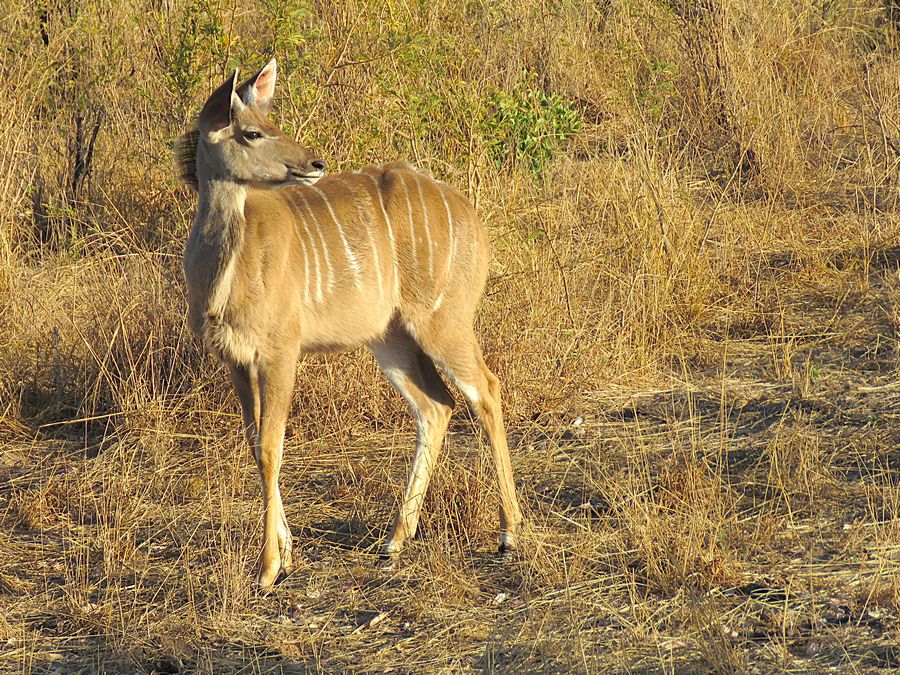
A young male kudu. See small horns.
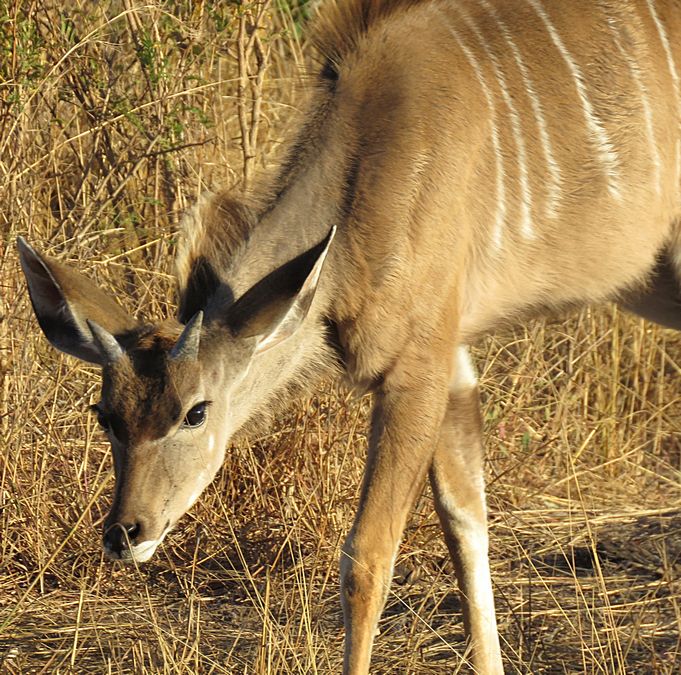
Clearly this young male kudu is still developing his
horns.
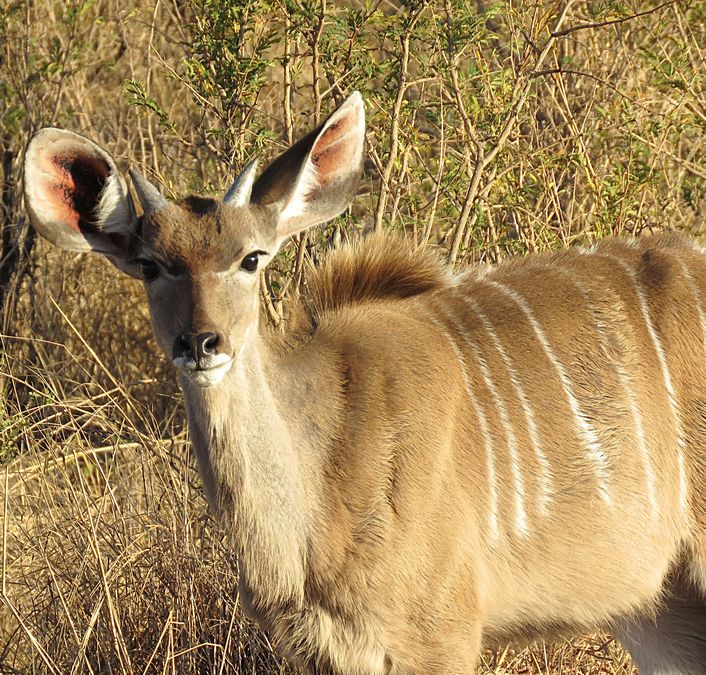

Wahlberg's Eagle - Small eagle with plumage varying from
dark brown to blonde. Preys on small animals.
Link to Part Two, Page Two - Kruger National Park
Pat's Home Page